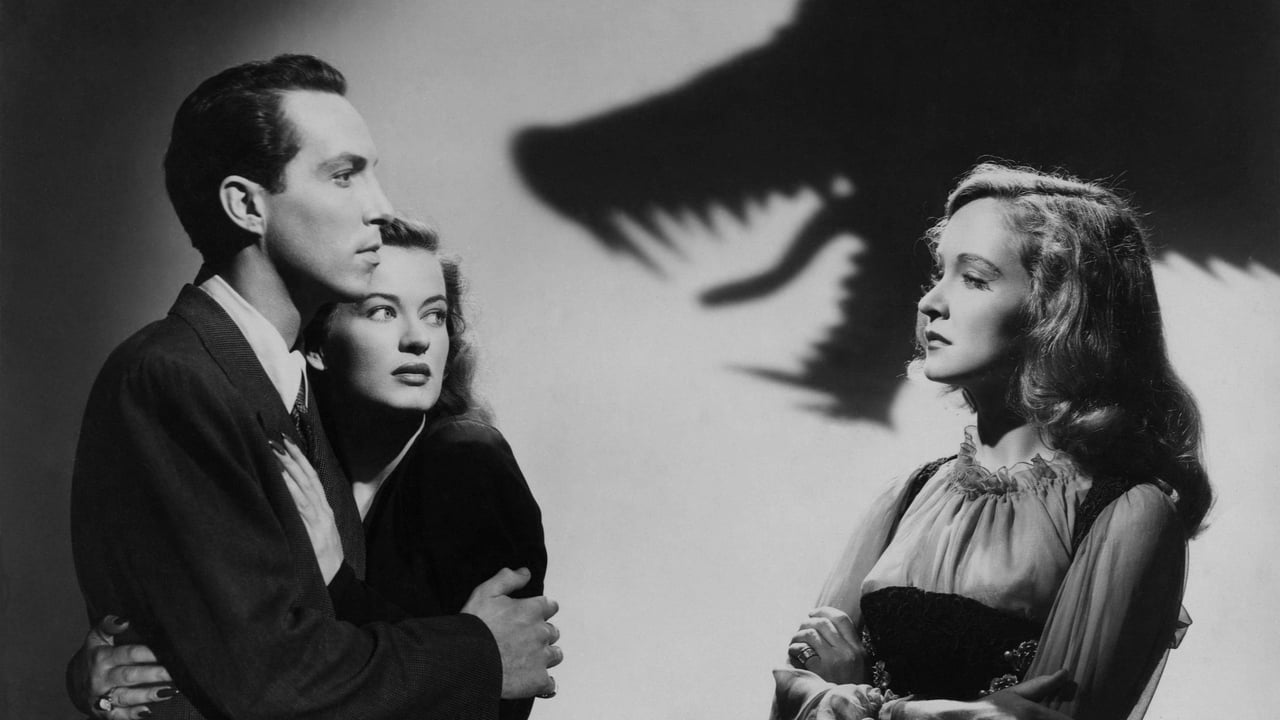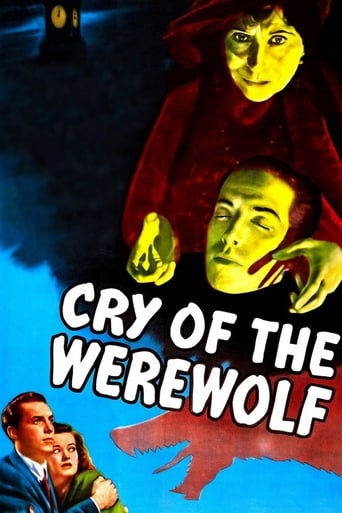

A really good werewolf entry. This film has an air of mystery that is appealing to me as well as a she-wolf. This one is about 2 years earlier than Universal's She-Wolf of London (1946) (which is also a good film).Nina Foch is Celeste, a princess of the gypsies. Celeste was born a werewolf like her mother before her. This story is about Celeste who hunts down those that find out about her.It's a little bit different than other werewolf films of the time era... even though there are gypsies and hunt for the werewolf. So this is not a film that is a repeat of other werewolf flicks - it is a story of it's own that is enjoyable to watch.7/10
... View MoreThere have certainly been some bad werewolf movies made over the years, but perhaps there have been none that have simply been lacking in so many ways as "Cry Of The Werewolf." This was a poorly acted, cliché- ridden (which was unfortunate, and I'll expand upon that in a moment) and completely atmosphere free film whose basic redeeming quality is that it's very short and therefore doesn't waste too much of your time. There were a couple of things that broke free of the usual Hollywood treatment of the subject that gave this some potential, which was largely wasted. The first was that this stayed more true to actual werewolf legends. The werewolf was actually a person who became a wolf, and not some hybrid wolf-man beast, and the werewolf was a woman - not unheard of, but unusual for the most part in the genre. There might have been some meat there; there was also the potential for atmosphere - the story revolves around a mysterious gypsy tribe and much of the action takes place in a mysterious house complete with a secret chamber and crypt. Neither was used to create much atmosphere, though, and both are admittedly part of the cliché-ridden part of the story.Other clichés? People from Transylvania abound in this, and there's even a kind of goofy cop involved in the investigation (not central to the film thankfully and overshadowed - again thankfully - by a more competent superior.) The acting was poor to fair at best. Especially poor was the woefully lacking in passion performance of Stephen Crane, who you'd think would be a bit more passionate, given that his father has just been torn apart by some wild beast! There's nothing even remotely frightening about this, and as mysteries go - well, there wasn't much. I kept watching to see if a potential plot twist might show up in the end that would have at least come as a surprise, but no. What you see from the beginning is basically what you get. It's very disappointing, and seemed basically to be put together by people who had no idea how to make a werewolf movie work. (2/10)
... View MoreIn the house where Marie Latour, a woman supposedly a werewolf, once lived a museum dedicated to the occult is set up. Latour had disappeared years before after killing her husband who discovered her secret. Years later the daughter of Latour returns and takes steps to make sure that her mother's grave and the secret temple are not desecrated. Confused and confusing supernatural tale seems to be trying to do Cat People one better but actually ends up several worse. Honestly this film is a bit of a mess story-wise. Watching this on DVD I even watched some scenes twice and had no idea what was going on. I honestly had no real idea what was going on and what the point of it all was. The problem is not so much the individual scenes but the complete lack of an idea about what the film is about. Yes the film has plot branches, but it doesn't have a central trunk, or at least a strong one to support all of the ideas. I'm not sure the film is really worth seeing. Pieces are, the opening of the film with a tour of the museum is fantastic. (Actually all of the bits are really good) The trouble is it never amounts to much beyond the pieces.
... View MoreScenes featuring three magnetic actresses lift The Cry of the Werewolf to a brief but intriguing glimpse of an occult matriarchy and sisterhood who renounce men for lycanthropy. A short running time and shorter budget prevent these themes' development, but the film delivers one loopy turn after another: *Despite being set in New Orleans, where water levels preclude underground construction, the film features two extended scenes in basements of surprising dimensions.*Granted, New Orleans is a multicultural city, but who suspected it was teeming with immigrants from Transylvania, among them a sizeable encampment of Gypsy or Roma folk in traditional covered wagons?*Several scenes hinge on a quadruped other than a wolf: Minnie the cat's yowls at wolves or gypsies earn her surprising screen time as well as solicitude from employees at the Marie La Tour Museum. Three scenes are punctuated by characters acting on Minnie's behalf.*Those wandering Gypsies / Roma converge in New Orleans one month a year for ethnic courtship and to bury their dead. Just when you're asking yourself, "What do they do with their dead those 11 other months?", another eccentric scene answers the question. . . .*"Adamson and Sons Undertakers" is, in its front rooms, a facsimile of a mid-20th-century funeral parlor, complete with drab furniture, cheap drapes, and recorded organ music playing in the background. Hurrying to turn it off is the last of the Adamsons, played by Milton Parsons (also uncredited), whose bald noggin and solicitous manner would lead to film and TV appearances through the 70s as a clerk, clergyman, professor, choirmaster, or coroner (thanks, IMDb).*"Refrigerated vaults" keep the Gypsy dead "on ice" at Adamson and Sons. A quick tour leads to a basement as extensive as a hospital wing. There a four-legged werewolf stalks Dr. Robert Morris, the movie's insipid leading man played by Stephen Craneno kin to The Red Badge of Courage author but doing his gosh-darnedest to imitate Jimmy Stewart.*The other basement, back in the Marie La Tour Museum but unseen till late in the movie, is entered through a mantelpiece by a secret passage whose operations everyone seems to know. Murders are overheard occurring somewhere beneath the fireplace. For most of the movie, though, viewers aren't granted a view of this secret chamber of blood. Near the end, though, Dr. Morris and Ilsa (Osa Massun), his Translylvanian foster-sister-turned-fiancée, explore the space. An altar designed like a Murphy bed drops out of the wall, bearing a large stuffed wolf, a human skull, and a goblet.These surprises aren't consistent enough to build on each other, but the film's a fast 66 minutes, so take a chance if only for the sake of its uncanny climax. That occurs in the covered wagon of Nina Foch's Gypsy Queen, named Marie La Tour after her mother-herself named perhaps to evoke the historical Marie Laveau (1801-81), a Voodoo queen of New Orleans who shared the name of her similarly talented mother.Under the guiding eye of Blanche Yurka as Bianca the "old woman," Queen Marie recruits her look-alike Ilsa, a non-Gypsy Transylvanian-American, to join her as a "sister" in the werewolf matriarchy founded by her mother, the previous werewolf-queen. No men! Ilsa's eyes grow and glow, but the moment is so overloaded with feminine beauty, lycanthropy, and alternative sexuality that the only exit available to her is a dead faint. When Ilsa is rescued by the regrettable Dr. Morris, the revelatory allure of that occult alternative shines a little brighter.
... View More